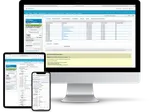
Tracking Client Progress Without Spreadsheets
Case managers juggle complex, long-term client goals. A survivor working toward stable housing needs job training, financial counseling, and childcare support. A youth in foster care pursues their GED while managing mental health treatment and independent living skills.
Tracking all of this used to mean spreadsheets, paper files, or scattered notes. Updates got lost. Team members worked from outdated information. Funders asked for progress reports and staff scrambled to compile data from multiple sources.
Building goal plans from templates
Collaborate’s Goal Plans gives agencies one place to create, track, and share client progress. Agencies build templates for common scenarios: educational goals, employment readiness, housing stability, reunification planning. When a new client starts services, staff select the relevant template and customize it.

A GED goal plan might include steps like “Sign Up for Classes,” “Attend Classes,” “Practice GED Exam,” “Take GED Exam,” “Obtain GED.” Each step includes:
- Granular status tracking - In Progress, Achieved, Not Achieved, Partially Achieved
- Three-tier date management - Start date, target completion date, actual completion date
- Sequenced list ordering - Steps display in the order clients complete them
- Individual step assignments - Different team members own different milestones
- Customizable categories and types - Match your program’s actual service delivery
Real-time updates across teams
If a client completes their GED exam on Tuesday, the case manager updates the step that afternoon. The employment specialist checking the case on Wednesday sees the achievement and knows it’s time to start job placement conversations.
Notes and documents attach directly to the goal plan. A client’s certificate, transcript, or progress evaluation goes into the digital record. Goal plans export as PDFs for court hearings, referring agencies, or to give clients a visual roadmap of their progress.
What this solves
Before Goal Plans, every case manager had their own tracking system. Some used detailed spreadsheets, others kept brief notes. When staff turnover happened, the next case manager pieced together client history from incomplete records.
Funders need outcome data. Without centralized goal tracking, agencies manually reviewed hundreds of case files to report how many clients achieved employment or completed educational programs. That process took days.
For clients working with an advocate, therapist, medical provider, and legal attorney, coordinated support matters. When each provider tracks goals separately, gaps appear. Goal Plans let the whole team see what’s happening and who’s responsible for next steps.
Built for different programs
Domestic violence programs track safety planning milestones. Child advocacy centers monitor therapy progress and legal case advancement. Family services agencies manage reunification goals with multiple family members.
The templates are configurable. Categories like “Get Driver’s License,” “Obtain GED,” “Secure Housing,” “Immigration Support,” or “Record Sealing” match the real services agencies provide. Staff review goal progress during supervision or case conferences. The data is already organized.
Agencies using Goal Plans report faster case reviews, better team coordination, and clearer outcome tracking for funders.
Resources:
